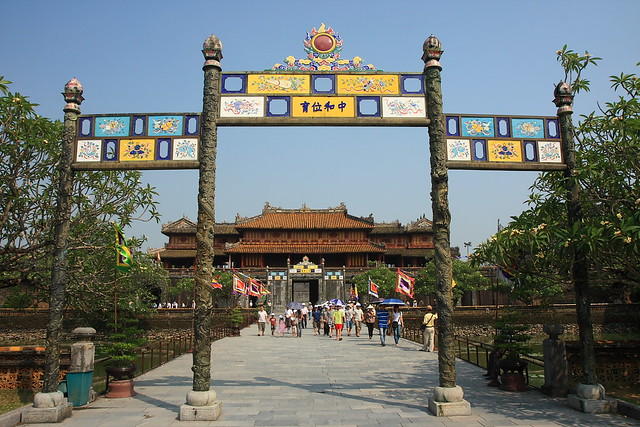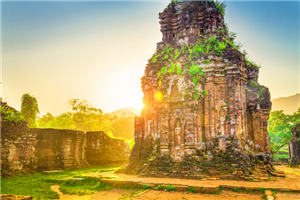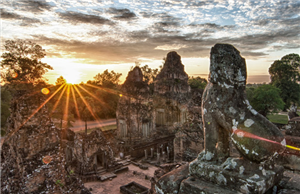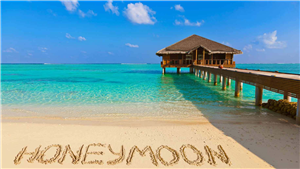Complex of Hué Monuments

© Photo: Loboalpha
Hué was the capital unified Vietnam from 1802 to 1945, center of political, cultural and religious influence of the Nguyen dynasty. With several buildings remaining along the Perfume River of the old Capital City, the Imperial City, the Forbidden Purple City and the Inner City, Hué is the landmark of the imperial Vietnamese history, arts and architecture.
- Location: Thừa Thiên–Huế Province, Vietnam
- Site type: cultural
- Year of inscription: 1993
Ha Long Bay

© Photo: Vinh.NT
Gathering more than 1,600 limestone islets in the Gulf of Tonkin, Ha Long Bay is an iconic seascape of verticals cliffs and jungle spread across the sea. The site’s beauty is famous around the world, and it is also a haven for biodiversity.
- Location: Quảng Ninh Province, Vietnam
- Site type: natural
- Size: 150,000 ha
- Year of inscription: 1994
Hoi An Ancient Town

© Photo: J Durok
The commercial activity of the port of Hoi An made it an important trade center from the 15th to the 19th century. Local and foreign traders have left their marks with numerous buildings that make up an exceptionally well-preserved ancient town with diverse influences.
- Location: Hội An, Quảng Nam Province, Vietnam
- Site type: cultural
- Size: 30 ha with 280 ha buffer zone
- Year of inscription: 1999
My Son Sanctuary

© Photo: James Tan
Developed from the 4th to 13th century, the My Son Sanctuary regroups the remains of several temples. This site used to be the political and religious capital of the Champa Kingdom, which was located on the coast of Vietnam and traced its cultural heritage from Indian Hinduism.
- Location: Duy Phú, Duy Xuyên District, Quảng Nam Province, Vietnam
- Site type: cultural
- Size: 142 ha with 920 ha buffer zone
- Year of inscription: 1999
Phong Nha-Ke Bang National Park

© Photo: lien
The Phong Nha-Ke Bang National Park is the oldest karst formation in Southeast Asia. With 65 km of caves and underground river, the park hosts a very complex karst landscape with significant geomorphic features.
- Location: Bố Trạch and Minh Hóa districts, Quảng Bình Province, Vietnam
- Site type: natural
- Size: 85,754 ha
- Year of inscription: 2003
Central Sector of the Imperial Citadel of Thang Long – Hanoi

© Photo: Eugene
When the Dai Viet kingdom got its independance from China under the Ly dynasty, it built the Thang Long Imperial Citadel which remained its political center for 13 centuries. The central sector of the Citadel embodies a unique culture from the Red River area, influenced from the North by China and from the Champa kingdom in the South.
- Location: Hanoi, Vietnam
- Site type: cultural
- Size: 18 ha with 108 ha buffer zone
- Year of inscription: 2010
Citadel of the Ho Dynasty

© Photo: Loi Nguyen Duc
The Citadel of the Ho Dynasty dates back to the 14th century. Reflecting the spread of Neo-Confucianism in that period, it was built according to the Feng Shui principles in a plain between the Ma and Buoi rivers along an axis between the Tuong Son and Don Son mountains.
- Location: Tây Giai, Vĩnh Lộc District, Thanh Hóa Province, Vietnam
- Site type: cultural
- Size: 156 ha with 5,079 ha buffer zone
- Year of inscription: 2011
Trang An Landscape Complex

© Photo: Đỗ Việt Cường
Situated in the south of the Red River delta, the Trang An Landscape Complex is a breathtaking area of karst limestone peaks piercing out of low cultivated valleys. Area of cultural significance as it has inhabited for more than 30,000 years, human traces in Trang An provide significant information on the Neolotic, Bronze Age, up to the historic era. It is also the site of Hao Lu, ancient capital of Vietnam from the 10th and 11th centuries.
- Location: Ninh Binh Province, Vietnam
- Site type: mixed, natural and cultural
- Year of inscription: 2014
So here is the full list of the World Heritage sites.
Source: aseanup







Older News